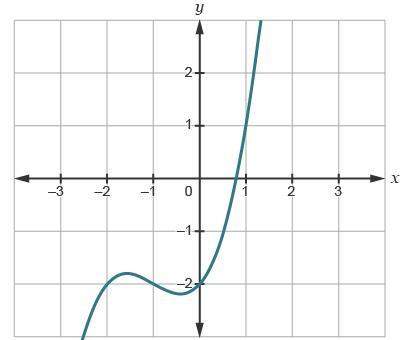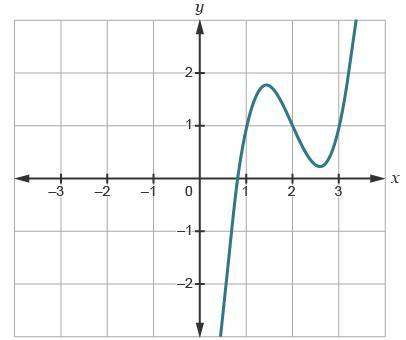lincolnalexanderrene
26.12.2019 •
Mathematics
The graph of g (x) = x cubed minus x is shown. on a coordinate plane, a cubed root function is shown. it approaches x = negative 2 in quadrant 3, has a point of inflection at (0, 0), and approaches x = 2 in quadrant 1. it crosses the x-axis at negative 1 and 1. which is the graph of 0.5 g (x minus 2) + 1? on a coordinate plane, a cubic root function is shown. it approaches x = negative 3 in quadrant 3, has an inflection point at (negative 1, negative 2), and then approaches y = 2 in quadrant 1. it crosses the y-axis at (0, negative 2). on a coordinate plane, a cubic root function is shown. it approaches x = negative 1 in quadrant 3, has an inflection point at (2, 1), and then increases and approaches y = 5. on a coordinate plane, a cubic root function is shown. it approaches the y-axis in quadrant 4, increases, has a point of inflection at (2, 1), and then increases and approaches x = 4. on a coordinate plane, a cubic root function is shown. it approaches the y-axis in quadrant 2, decreases, has a point of inflection at (negative 2, 1), and then decreases and approaches x = negative 4.





Solved
Show answers
More tips
- H Health and Medicine Simple and Effective: How to Get Rid of Cracked Heels...
- L Leisure and Entertainment What to Bring on a Hike? Essential Items to Pack for a Safe and Enjoyable Adventure...
- L Leisure and Entertainment Couchsurfing: A New Way to Travel...
- S Style and Beauty Autotanning: Harmful or Safe?...
- F Food and Cooking 10 Ideas for a Wedding Anniversary Gift...
- H Health and Medicine How to Reduce Sweating in the Heat and Beyond: Say Goodbye to Excessive Sweat...
- F Food and Cooking Do Aphrodisiacs Really Work? Separating Fact from Fiction...
- H Health and Medicine What to Eat to Lose Weight?...
- A Animals and plants How to Teach Your Parrot to Talk?...
- H Health and Medicine How to Improve Your Posture?...
Answers on questions: Mathematics
- M Mathematics Help please question in the picture...
- M Mathematics Aflagpole casts a shadow of 10 ft long. if a man is 6 ft tall casts a shadow of 4ft long at the same time of day, how tall is the flagpole?...
- M Mathematics 40:33A cylinder has a radius of 6 inches and is 15 inches tall. What is the volume of the cylinder? Express the answer in terms of s.r= 6 in.h = 15 in.Recall the...
- M Mathematics Expand (2x – 4)2 using the square of a binomial formula....
- M Mathematics Which formulas will you use to find the area of this figure? Select all that apply. A=bh A=2bh A=2(b+h) A=1/2bh A=b+h...
- M Mathematics You put $6,000 in an account the account of $1050 simple interest in 5 years was the annual interest rate...
- M Mathematics (15 POINTS) (FOLLOW DIRECTIONS ON ATTACHMENT!)...
- M Mathematics Pls pls I really need help...
- M Mathematics Select the correct text in the passage. Which of these excerpts from Dr. Seuss s book Bartholomew and the Ooobleck uses onomatopoeia? 1. But before Bartholomew could...
- M Mathematics An aircraft leaves A at 16:00 hours and arrives at B at 19:30 hours, travelling at an average speed of 550 kilometres per hour. A and B are in the same time zone....

Ответ:
I guess its C, not sure though